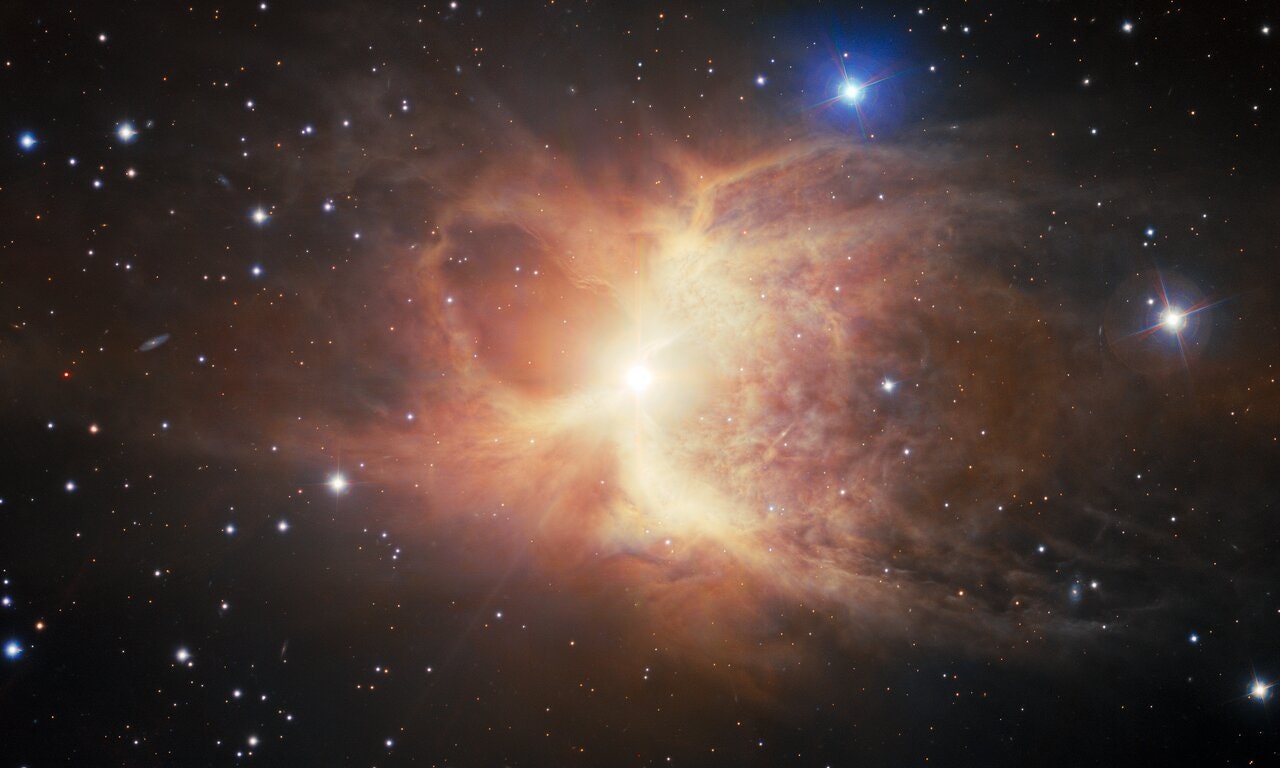
“Everything has its finale, nothing lasts forever.” These lyrics, from iconic salsero Héctor Lavoe, come to mind when presented with NOIRLab’s dazzling image of the Toby Jug Nebula.
About 1,200 light-years from Earth in the direction of the Carina constellation, a red-giant star is in its last act. Though it's significantly younger than the Sun, it also has a much larger mass, which has made it burn faster. Now that its last reserves of hydrogen have fused and no outward force from its core sustains the weight of its size, the star HR3126 has contracted, heated up, and puffed out. The Sun will meet the same fate in five billion years, swallowing up several planets and entering oblivion with a spectacle perhaps just as grand as the Toby Jug Nebula.
In the Andes mountains of Chile, the U.S. National Science Foundation’s NOIRLab operates the Gemini South Telescope. Its perch upon Cerro Pachón provides some of the best views of the universe that ground-based equipment can have. NOIRLab published its view of the Toby Jug Nebula, a celestial object also known as IC 2220, on Thursday.

Why does the nebula look so symmetrical?
A red giant dies slowly. As the star sheds its outer layers, the dust and gas billow out to create mesmerizing structures of varying shapes, which astronomers call planetary nebulas.
Though the material that wafts around HR3126 is expected, the shape the debris forms in space is surprising.
The dust and gas look like symmetrical orbs and almost resemble a reflection of water. NOIRLab officials say the Toby Jug Nebula’s shape is reminiscent of a few other cases where a final-phase red giant mingles with a companion star, a possible clue to understanding what went down there.
Astronomers suspect a now-gone star once accompanied the star that is now at the nebula’s heart and that its past interactions with the remaining star forged the nebula’s grand wings.
“Evidence suggests that this [nebula] object formed by the interactions between the dying red giant and a now-shredded companion star,” NOIRLab officials write. No second star appears in this scene, but a “compact disk of material around the central star” may be its traces.
A deeper look in the mirror
The nebula’s loops mesmerize with their reflection-like symmetry. They are also a clue about how low- to intermediate-mass stars behave and evolve toward the end of their lives.
They give a different perspective on how lucky Earth is, for instance. HR3126 is “considerably younger” than the Sun at just 50 million years old, compared to our star’s 4.6 billion-year tenure as the hub of the Solar System. But at five times the mass of the Sun, HR3126 has already burned through its hydrogen supply.
It’s true that everything has an end. But in this case, it’s not quite yet.







